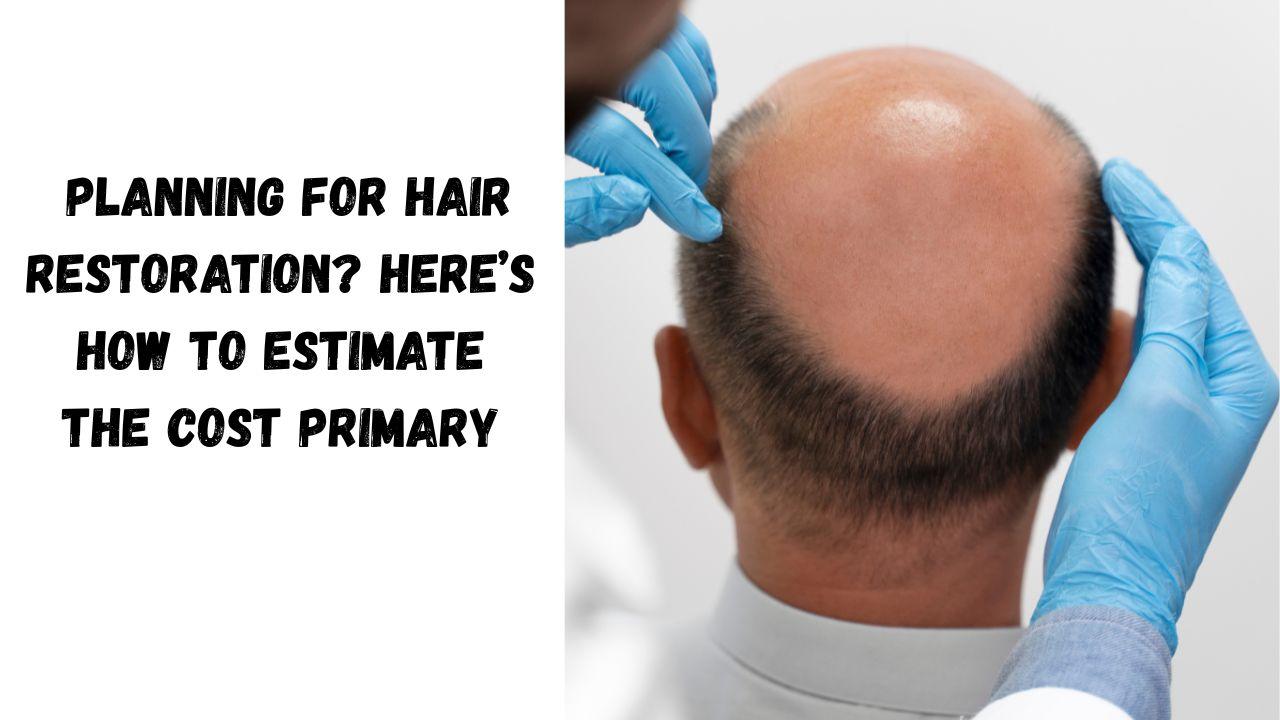Interest in hair restoration has grown rapidly, with an increasing number of people seeking solutions for thinning hair or hair loss. As demand increases, so does the need to understand the financial side of treatment. Knowing the hair restoration cost is essential for anyone considering this life-changing procedure—it helps with budgeting, setting realistic expectations, and planning long-term care. This quick guide breaks down the factors that influence the overall price and provides insights to help you estimate your potential expenses. Whether you're just starting to explore your options or ready to take the next step, this information will help you make a more informed decision.
Why Hair Restoration Costs Vary
The cost of hair restoration might vary greatly depending on a number of important criteria. The final cost depends on the degree of hair loss, the amount of grafts required, the procedure (e.g., FUE or FUT), and the experience of the surgeon. The location of the clinic and the technologies employed can also affect the price. Above all, the therapies are quite customized. Since every patient has different demands, the cost is based on a personalized strategy designed to produce long-lasting, natural outcomes. Although this tailored strategy guarantees the best results, expenditures are not uniform. Patients can make well-informed judgments on their investment in hair restoration by being aware of these factors.
Key Factors That Influence Hair Restoration Cost
- Type of Procedure – FUE is often more expensive due to its precision; FUT may be more affordable but leaves a linear scar.
- PRP Therapy – Less invasive, lower cost, but multiple sessions needed.
- Scalp Micropigmentation – A cosmetic, non-surgical procedure that is usually more affordable.
- The extent of Hair Loss – A larger Norwood scale means more grafts, which raises costs.
- Clinic Location – Premium areas, such as Beverly Hills, typically charge more than smaller cities.
- Surgeon's Expertise – Highly experienced surgeons charge more, reflecting quality and results.
- Technology Used – Robotic tools enhance accuracy and reduce costs.
- Additional Services – Consultations, meds, and aftercare add to the total cost.
Average Hair Restoration Costs in 2025
Hair restoration costs in 2025 vary depending on the method used. FUE typically ranges from $8 to $10 per graft, while FUT averages $4 to $8 per graft. For example, a 2,000-graft FUE procedure normally costs between $5,000 and $20,000. The total cost depends on the case severity—minor cases may require 1,000 grafts ($3,000–$8,000), while severe cases could necessitate up to 4,000 grafts ($8,000–$32,000). Pricing also varies by clinic location, surgeon expertise, and the specific technique used. Always consult a qualified specialist to receive an accurate quote tailored to your specific hair restoration needs.
Estimating Your Own Hair Restoration Cost
Estimating your own hair restoration cost begins with identifying your stage of hair loss, often using the Norwood scale for men or the Ludwig scale for women. Next, decide on the procedure you prefer—FUE, FUT, or non-surgical options. Research the average number of grafts typically required for your stage of treatment. Costs are usually calculated per graft, which helps create a rough estimate of the total cost. While free online tools or calculators can guide you, a professional consultation offers the most accurate quote. Personalised factors, such as donor hair quality and desired density, also influence the final price. Always consult a trusted specialist for clarity.
Cost vs. Value: Is It Worth the Investment?
Hair restoration may seem costly upfront, but the long-term value far outweighs the expense. Unlike temporary fixes like wigs or ongoing medication costs, a hair transplant is a permanent solution that grows with you over time. Over time, it becomes more cost-effective and less of a hassle. Beyond finances, the return on investment is clear: restored hair boosts self-confidence, enhances appearance, and can positively impact both personal relationships and career opportunities. Choosing hair restoration is more than a cosmetic decision—it's an investment in your overall well-being. When compared to the recurring costs and emotional toll of temporary fixes, the value becomes undeniably worthwhile.
Tips to Save on Hair Restoration Without Compromising Quality
- Look for Bundle Offers & Seasonal Promotions: Clinics often provide discounts during special events or for combined services, helping you save significantly.
- Explore Financing Plans & Medical Credit: Flexible payment options, such as monthly plans or healthcare credit, can make procedures more affordable without upfront costs.
- Choose the Right Clinic: Opt for a reputable clinic with experienced surgeons and transparent pricing. Quality care reduces the risk of complications and costly corrections.
- Consult Multiple Clinics: Comparing consultations helps you understand market rates and service quality, ensuring you get the best value for your investment.
Conclusion
Understanding the importance of accurate hair transplant cost estimation is essential for making informed decisions about your treatment. A clear cost breakdown helps you plan financially and ensures there are no surprises along the way. We encourage you to thoroughly research your options and consult only with experienced, trusted providers who prioritise your unique needs and goals. Each individual's hair restoration journey is different, and pricing can vary based on multiple factors. For a transparent, customized approach,
Contact Beverly Hills Hair Restoration for a personalised consultation and a customised pricing estimate tailored to your specific needs. Your path to restored confidence starts with the right guidance.

